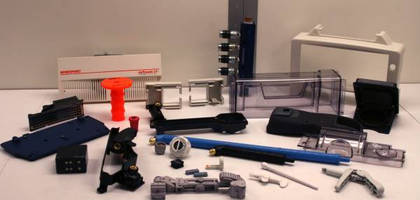Injection Molding Still a Steadfast Manufacturing Process

The custom injection molding process is now more than 150 years old. It remains one of the most dependable manufacturing processes still in use today. The plastics we know of today owe their origins to the late 19th century European and American chemists who experimented with many kinds of rubber and residue from various chemical mixtures.
From the early 20th century scores of new plastic materials were developed:
• Rayon in 1891
• Cellophane in 1913
• Nylon in 1920
• Polyvinylchloride (PVC) in 1933
• Teflon in 1938
• Polyethylene in 1933
From early 1950, plastics have grown into a major industry. This market has grown exponentially while undergoing continuous modification, development and refinement for these materials.
Thermoplastic Materials
Thermoplastics soften and melt when they are heated. When heat is removed - they stiffen and harden into a new shape. Thermoplastics are what most people relate to when thinking about plastics. This is because of the numerous domestic products produced from them.
The custom injection molding technique was developed to more effectively process this family of plastics. A few commonly used thermoplastics include:
• Polyethylene
• Polypropylene
•Â Polystyrene
• PVC
• ABS
• Nylon
The countless other engineered plastic materials and compounds suit broad varieties of applications.
Why Custom Injection Molding?
Custom injection molding delivers a vast array of plastic components. These shapes range from relatively simple to completely complex. The injection mold cavities are fed with melted plastic material. This is forced under high pressure through a sprue. The sprue feeds a runner system - then sends it through a gate into the cavity.
This material is cooled. Once solid - the material is ejected from the mold as a finished part. The injection molding machine includes a clamp unit and the injection unit. The clamp unit holds and clamps the tool into position. The injection unit plasticizes and injects the material into the mold positioned by the clamp unit.
Clamp force must be sufficient enough to hold the mold closed against the hydraulic pressure of any material injected under high pressure by the injection unit. A rule of thumb includes having three tons of clamp force for every square inch of cavity projected area into the mold. Both units are coordinated by a computer controller on the machine. This is programmed to efficiently produce high quantities of consistent quality parts on automated cycles.
Today's injection molding machines are capable of tight tolerances and repeatability. Because injection molding has the ability to produce large volumes - it remains the most cost-effective method of manufacturing. Part design and complexity, material, tooling and process design and control all play a part in the level of tolerance.
Compare this with additive manufacturing in which parts are created by the laying down of thin layers of material bit by bit. It is brilliant for coming up with a design, and having it printed to see if it works from a form-and-function standpoint. However, once a device enters into large-volume production, injection molding is still the best choice.
Additive manufacturing is a much younger process and is evolving rapidly, but has not yet reached the point where it can produce as durable components in as large volumes as injection molding.
Pliability of Custom Injection Molded Parts
Injection molded parts are either very soft and pliable - or as strong and robust as steel. The ability of the injection mold to deliver extremely strong components with a tight tolerance has facilitated the move some OEM's have made from metals to plastics. Material choices are widely available for injection molding.
Repeatability is a key feature for injection molding. The nature of this process provides the ability to produce the exact same device over and over with exactitude. Repeatability is essential for considering medical devices, as sterility and precision is of utmost importance. Process validation and control are essential aspects of the repeatability of injection molding.
There are several factors that effect repeatability. Fill time for the flowable material into the mold, and screw design and consistent melt quality for ensuring shot-to-shot repeatability. It is for these reasons the very geometry of the screw that injects the flowable material into the mold must be specifically matched to the polymer being used. Crescent Industries has been in the custom injection molding field for decades. If you have any questions about your plastic molded part or design - be sure to contact us today. For more information, visit our website www.crescentind.com or call 1-800-411-3844.




